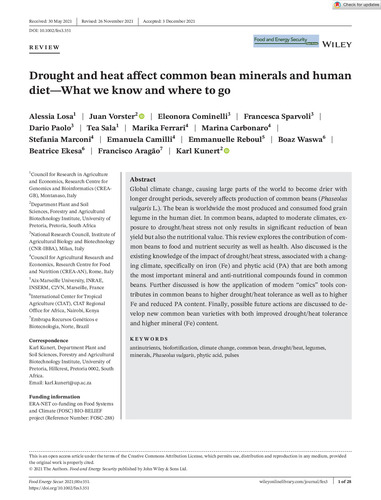Drought and heat affect common bean minerals and human diet—What we know and where to go
Global climate change, causing large parts of the world to become drier with longer drought periods, severely affects production of common beans (Phaseolus vulgaris L.). The bean is worldwide the most produced and consumed food grain legume in the human diet. In common beans, adapted to moderate climates, exposure to drought/heat stress not only results in significant reduction of bean yield but also the nutritional value. This review explores the contribution of common beans to food and nutrient security as well as health. Also discussed is the existing knowledge of the impact of drought/heat stress, associated with a changing climate, specifically on iron (Fe) and phytic acid (PA) that are both among the most important mineral and anti-nutritional compounds found in common beans. Further discussed is how the application of modern “omics” tools contributes in common beans to higher drought/heat tolerance as well as to higher Fe and reduced PA content. Finally, possible future actions are discussed to develop new common bean varieties with both improved drought/heat tolerance and higher mineral (Fe) content.

